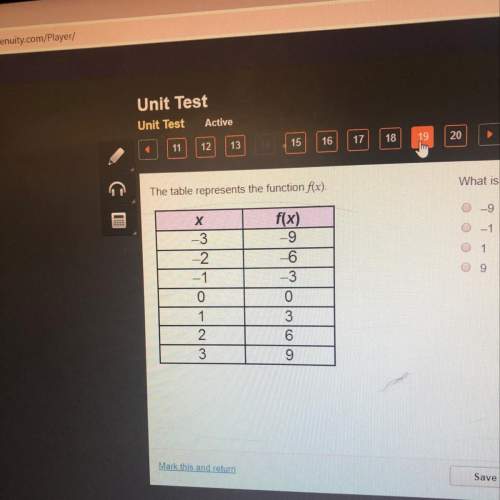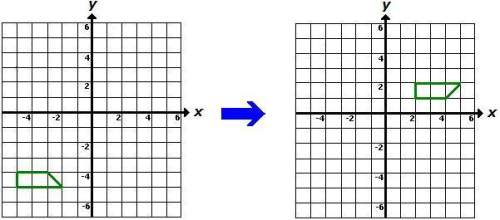
Mathematics, 24.06.2021 17:20 kay4358
If f(x) = |x| + 9 and g(x) = –6, which describes the range of (f + g)(x)?
(f + g)(x)  3 for all values of x
3 for all values of x
(f + g)(x)  3 for all values of x
3 for all values of x
(f + g)(x)  6 for all values of x
6 for all values of x
(f + g)(x)  6 for all values of x
6 for all values of x

Answers: 1
Another question on Mathematics

Mathematics, 21.06.2019 15:50
Assemble the proof by dragging tiles to the statements and reasons column
Answers: 2

Mathematics, 21.06.2019 16:50
The rate of decay of a radioactive substance depends upon the amount present initially. the mass y (mg) of the radioactive substance cobalt-60 present in a sample at time t (years) is represented by the exponential equation y=50e −0.1315 t . answer the following questions in complete sentences. 1. how does the exponential equation above compare to the equation for simple interest that is compounded continuously? explain the similarities. 2. what is the initial amount of cobalt-60 in the sample? 2. how much cobalt-60 is left after 8.4 years? show your work. 3. what would be the y-intercept of the graph? what does it represent? 4. after how many years will the amount of cobalt-60 left be 6.25 mg? explain what happens to the cobalt-60 after 50 years? 5. discuss some “real-world” examples and uses of cobalt-60
Answers: 1

Mathematics, 21.06.2019 18:30
How do you determine whether a relationship represented as as graph is linear or nonlinear
Answers: 1

Mathematics, 21.06.2019 19:30
Aline passes through 3,7 and 6,9 what equation represents the line
Answers: 2
You know the right answer?
If f(x) = |x| + 9 and g(x) = –6, which describes the range of (f + g)(x)?
(f + g)(x) 3 for all valu...
Questions









Computers and Technology, 26.07.2019 15:00




Mathematics, 26.07.2019 15:00











